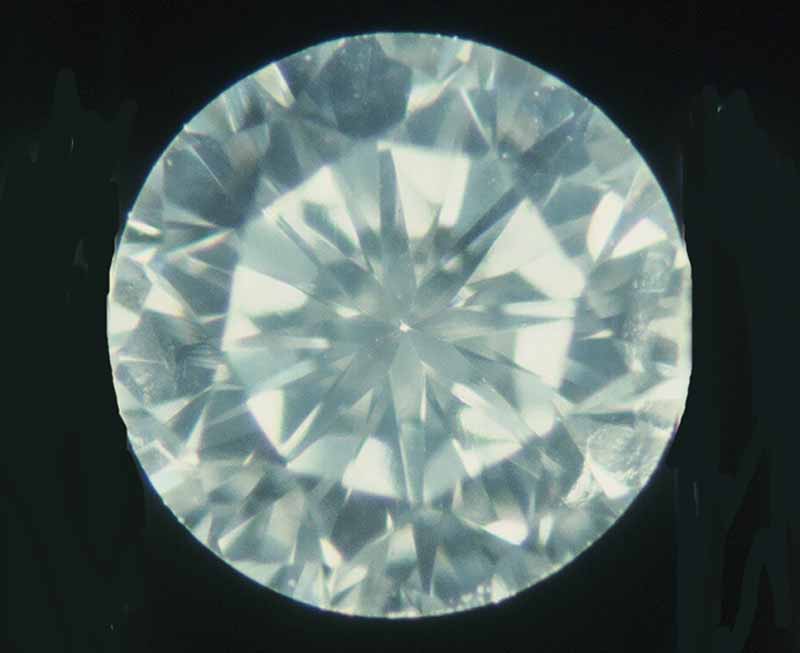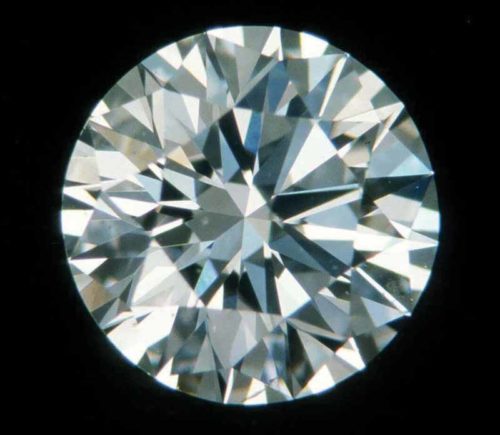
Clarity
Clarity refers to the degree to which a stone is free from external marks (blemishes) and internal features (inclusions). Five factors of clarity grading are size, number, location, nature, and relief.
There are 11 GIA clarity grades which are defined on GIA.edu as:
- Flawless (FL): No inclusions or blemishes are visible to a skilled grader using 10x magnification.
- Internally Flawless (IF): No inclusions and only blemishes are visible to a skilled grader using 10x magnification.
- Very, Very Slightly Included (VVS1 and VVS2): Inclusions are difficult for a skilled grader to see under 10x magnification.
- Very Slightly Included (VS1 and VS2): Inclusions are minor and range from difficult to somewhat easy for a skilled grader to see under 10x magnification.
- Slightly Included (SI1 and SI2): Inclusions are noticeable to a skilled grader under 10x magnification.
- Included (I1, I2, and I3): Inclusions are obvious under 10x magnification and may affect transparency and brilliance.
Transparency can play a significant role in determining the value and desirability of a gemstone; in most cases, the higher the transparency, the more valuable the gemstone.
Creator
As lab-grown (or synthetic) diamonds have become readily available, the prices of these stones have dropped considerably, and are now well below the cost of mined (natural) diamonds. For example, today’s consumer is able to buy a 0.5-carat, lab-grown pink solitaire diamond, set in a rose gold-plated sterling pendant, for only $500.
Transparency
The GIA and the often-cited reference book Gems by Robert Webster define ‘transparency’ as the degree to which a gemstone transmits light. (Mineralogists use the term ‘diaphaneity’ to describe this, but gemmologists prefer ‘transparency’ because it’s easier for laypeople to understand.)
There are five categories of transparency:
- Transparent: objects seen through the gemstone look clear and distinct.
- Semi-transparent: objects look slightly hazy or blurry through the stone.
- Translucent: diamond is cloudy and milky like frosted glass.
- Semi-translucent or semi-opaque: only a small fraction of light passes through the stone, mainly around the edges.
- Opaque: virtually no light can pass through the gemstone.
Transparency can play a major role in determining the value and desirability of a gemstone; in most cases, the higher the transparency, the more valuable the gemstone.

While clarity and transparency are interconnected, they are also distinct. If a cloudy spot is found in a transparent diamond, the cloud is a clarity feature; however, if the entire diamond is cloudy due to submicroscopic inclusions, the cloudiness is a matter of transparency. Further, if the diamond is very cloudy, this will likely affect the clarity grade. In most cases, though, clarity grades are not an indication of the degree of transparency of a diamond. This is because:
- Diamond grading labs don’t normally take into account subtle differences in transparency (for example, hazy and slightly cloudy diamonds with VS clarity grades); and
- Diamonds with obvious transparency problems are seldom submitted to labs for grading—more often than not they’re mounted in bargain-priced jewellery.
Treatment status
Unlike coloured gemstones, most diamonds are untreated; however, this is changing. Diamonds may now undergo fracture filling, laser drilling, coating, irradiation, heating, and high pressure high temperature (HPHT) treatments in order to improve their clarity, colour, transparency, and marketability.
Diamonds coloured by irradiation or HPHT treatment are a fraction of the cost of natural fancy colour diamonds. For example, a 1-carat irradiated ‘fancy’ green diamond of VS clarity might retail for around $5000 per carat; however, if the same diamond were of natural colour, it would likely sell for more than $200,000 per carat, as natural green diamonds are unusually rare. In May 2016, a 5.03-carat VS2 fancy vivid green diamond, the ‘Aurora Green,’ was auctioned by Christie’s for $16.8 million (or $3.3 million per carat).
Treated green diamonds are much easier to find and are often produced from low-priced stones that are brownish or below-L colour—in essence, the customer is paying for the cost of the low-priced diamond and the treatment process.
Most fracture filling, laser drilling, and coatings can be detected by skilled jewellers and appraisers. Accurate detection of irradiation and HPHT normally requires the special expertise and sophisticated equipment of a qualified independent gem laboratory.
As previously stated, purchasing a diamond accompanied by a lab report is vital, as this paperwork verifies whether or not a diamond is treated. Major labs are able to identify the vast majority of treated diamonds; if they can’t, they will indicate that the treatment status is undetermined.
With the proliferation of treatments and synthetic diamonds, it is good practice to request that natural diamond suppliers identify their diamonds as untreated and natural on invoices, especially when dealing with new vendors. This practice will help protect jewellers from claims of possible misrepresentation if a diamond turns out to be treated. If a stone is identified as enhanced or processed, this means it is treated. The specific treatment should be identified and clearly explained to a customer prior to a transaction taking place. Attractive untreated diamonds are still readily available and pose the fewest potential problems for jewellers.
Conclusion
While the 4Cs were once a comprehensive method of pricing diamonds, the diamond industry has evolved and introduced more pricing factors. Even though it would be unreasonable to expect jewellers to discard their 4Cs charts and related advertising materials, trade members and consumers should be aware of the additional elements that affect diamond value.
Renée Newman, BA, MA, GG, is a gemmologist, lecturer, and author of 13 gem and jewellery books including the Diamond Handbook: How to Identify & Evaluate Diamonds, 3rd Edition. She wrote her first book, the Diamond Ring Buying Guide, in 1989 while working at the Josam Diamond Trading Corporation in downtown Los Angeles. A new 8th edition will be available in February 2020. For more about Renée & her books, see www.ReneeNewman.com.






